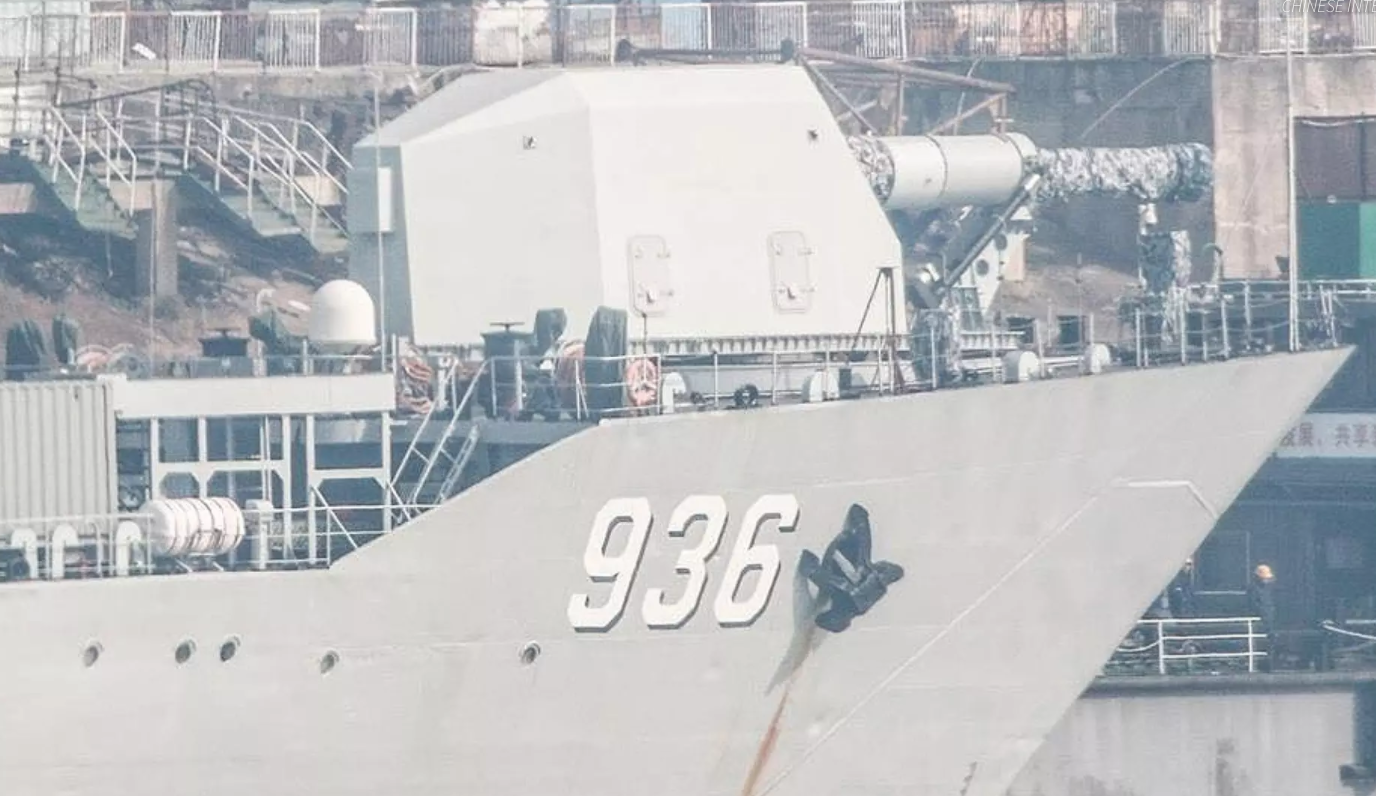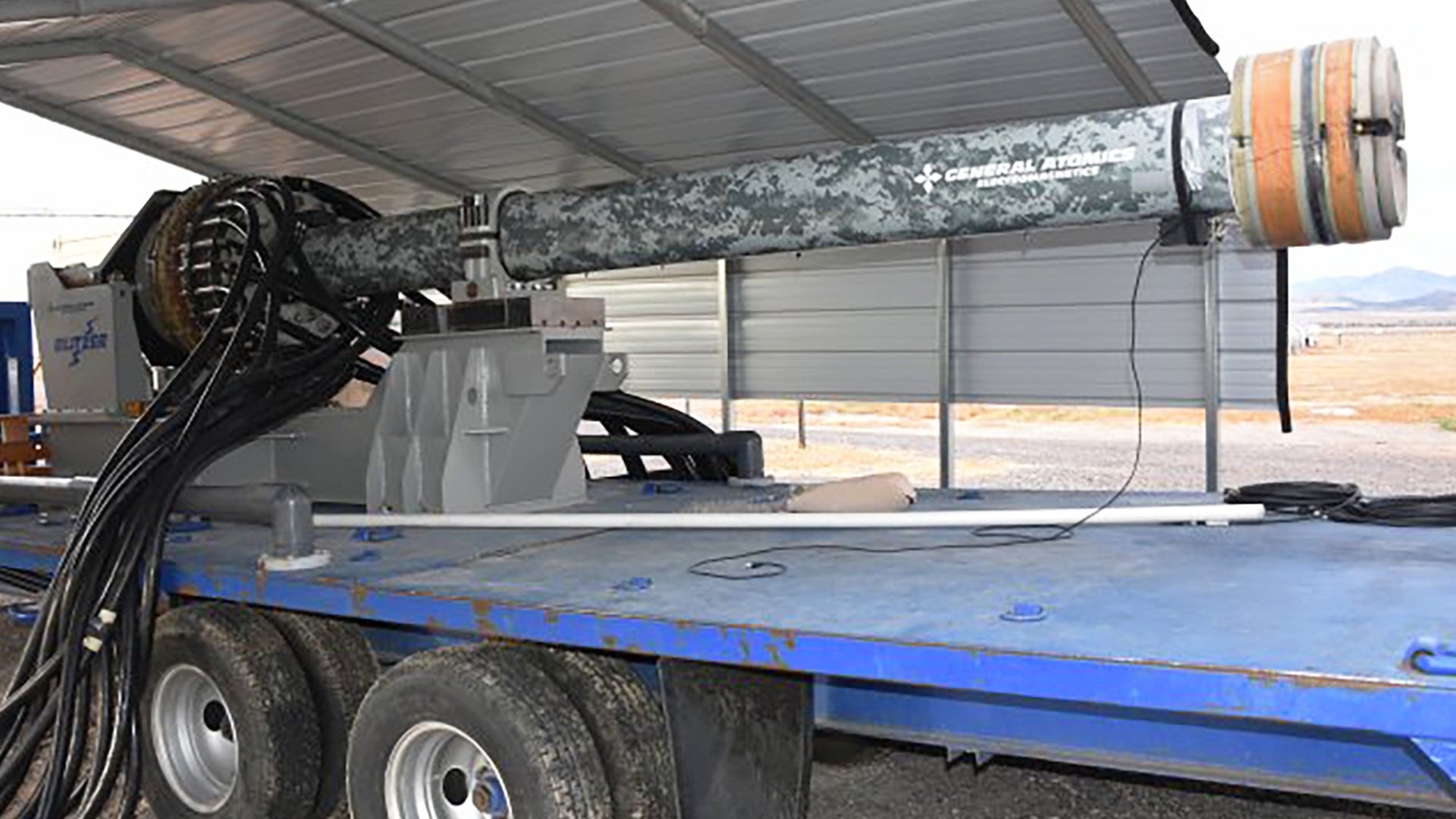There have been largely unfounded claims that the Navy is ‘abandoning’ what was once its most high-profile future weapons technology, the electromagnetic railgun. But even though the Navy’s railgun program continues, it still exists largely in a primordial research and development state. Meanwhile China shocked the world by moving forward with fielding its own prototype railgun for shipboard testing. But the U.S. Army, with the help of the Pentagon’s Defense Ordnance Technology Consortium (DOTC), is quietly aiming to move General Atomics’ scalable “Blizter” railgun concept into a semi-operational state.
For those who don’t know what a railgun is, the Army best describes the technology as such:
“Railguns use two parallel metallic rails with a sliding armature between them that holds the projectile. When a large electromagnetic pulse is introduced to the rails, a powerful magnetic field is created that propels the armature and projectile along the rails at hypervelocity. Velocity depends upon the power of the pulse.
Railgun projectiles are non-explosive and safer to manufacture, transport and store. Velocity is adjustable shot-to-shot, conserving power. Projectiles are guided to the target after leaving the launcher, and reach a target faster. At 100 yards, railguns sound no louder than a .30-06 rifle firing. What little “smoke” they create is actually plasma particulates or dust.”
Earlier this month, General Atomics—the same folks who produce the Predator and Reaper drones, as well as the Navy’s less than ready for prime time Electromagnetic Aircraft Launch System (EMALS), among many other defense products—announced that it had been awarded a contract to further develop and test their railgun for U.S. Army applications. The contract will run for three years and will result in a number of prototypes that will be evaluated and integrated into existing Army vehicles and fighting doctrine.

Nick Bucci, vice president of Missile Defense and Space Systems at General Atomics stated the following in a company release:
“This contract allows the ARDEC to leverage our on-going research, development, and testing to advance railgun technologies and further develop railgun weapon systems for Army applications enhancing their effectiveness against multiple types of threats… The railgun weapon system is intended to integrate with existing Army systems and complement conventional capabilities, providing an effective counter to aircraft, rocket and cruise missile raids as well as other threats.”
Mike Rucker, the director of programs for Missile Defense Systems also added:
“Using hypersonic projectiles, railgun provides the soldier with shorter time to target, achieves effectiveness at longer range, and provides a lower cost per engagement than conventional interceptors.”

We have detailed all of these potential benefits of railguns in the past but usually in terms of how the Navy could employ such a system, not a land-centric force like the United States Army. But in actuality, the Army has just as much if not a greater need for railgun technology. If anything else, it would give the service’s artillery units the ability to rapidly deliver extremely hard-hitting attacks over double the range of existing multiple-launch guided rockets systems—namely the M30 and M31 guided rockets used by HIMARS. It would also have much deeper magazine depth and the ability to provide more persistent fire support. And it would be able to do all this economically and in any weather conditions.

Being able to draw an 80 to 100 mile radius around a point on a map and know you can quickly engage targets at any time and in any atmospheric conditions within that circle without relying on air power is a very attractive capability to have in itself. But executing artillery strikes is just one of the railgun’s many applications. As noted by Mr. Bucci, the technology is nearly an ideal anti-air weapon—potentially capable of taking out air breathing and ballistic missile threats. Even counter-motor, artillery, and rocket defense could be another critical job for these weapons.

So for the Army, which will face the possibility of operating deep in contested territory, potentially without persistent air cover, the railgun concept is something of a super weapon. With this in mind, General Atomics wants to take what they have learned from their three mega joule and 32 mega joule test guns and refine the technology into a 10 mega joule land-mobile railgun system. The company has supposedly made some major advances in miniaturizing the infrastructure needed for generating and distributing the pulsed power required to launch guided projectiles at hypersonic speeds via their railgun architecture.

Nick Bucci told the Army the following during testing last Summer at Dugway Proving Grounds in Utah:
“We’re getting more energy in a smaller package, so you can have more energy and still have (the railgun) be transportable… We’ve made tremendous strides on the energy density of capacitors.”
One of the biggest roadblocks in operational railgun development has been longevity of the barrels used to propel projectiles at nearly 6,500 miles per hour—twice that of a standard artillery round. But Bucci notes that this too is changing:
“The way we produce the launchers now, we believe bore life will be in the neighborhood of thousands of shots”

Meanwhile, China’s military has confirmed that it has indeed fielded their railgun prototype aboard a ship for testing. Global Times quoted the official Chinese release as such:
“On Thursday, navy.81.cn published a report about Zhang Xiao, an associate research fellow at the PLA Naval University of Engineering. The report mentioned that Zhang is a key figure in China’s research into “electromagnetic launching technology,” and she is also a core member of the team led by Rear Admiral Ma Weiming, also an academician of the Chinese Academy of Sciences.
Ma’s team is responsible for research into the most significant areas for the Chinese navy, including nuclear submarines and aircraft carriers, and Zhang has also made her own contributions to the navy.
“After hundreds of failures and more than 50,000 tests,” Zhang has successfully developed the largest “repeating power supply system” in the world, the report said.”

The idea that the Pentagon would abandon electromagnetic railgun technology during a new age that the Pentagon itself describes as one marked by ‘great power competition’ was and still is a laughable claim. And now it’s clear that the Army putting its money where its mouth is when it comes to making its own railgun dreams a reality in the not so distant future.

We will have to wait and see if the Navy’s program, which also includes BAE Systems’ railgun design, gets accelerated through reprogrammed funding. Just two years ago the seagoing service was dead-set on a shipboard test of the technology around right now. In fact, some of the Navy’s brass was contemplating skipping that test altogether and installing the system on an operational ship—a ludicrous idea but one that was being floated nonetheless. Although those fevered railgun dreams have been severely tempered, if General Atomics can prove its technological breakthroughs in a proof of concept format over the next few years for the Army, maybe the Navy will migrate towards the program as well.
It wouldn’t be the first time the Army has given birth to a high-tech capability that other services quickly appropriate as their own.
We will keep you updated as the Pentagon’s railgun saga continues to unfold.
